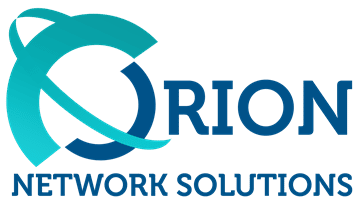7 Reasons Why Some Businesses Will Never Adopt AI Technologies: Key Barriers and Implications
While 92 percent of companies plan to increase their AI investments over the next three years, many businesses will never successfully adopt AI technologies. Despite AI tools’ transformative potential and widespread availability, specific organizational barriers create insurmountable obstacles for some companies.
The reality is that fundamental issues around leadership resistance, workforce readiness, security concerns, and cultural factors will prevent many businesses from ever implementing AI solutions effectively. These challenges go beyond simple technology adoption and strike at the core of organizations’ decisions.
Understanding why some businesses will never embrace AI can help you identify potential roadblocks in your organization and develop strategies to overcome them. The factors that create AI adoption failures often stem from deeply ingrained organizational patterns that require significant effort to address.
Key Takeaways
- Leadership resistance and inflexible organizational mindsets create permanent barriers to AI implementation.
- Concerns about ROI, security risks, and workforce capabilities prevent many companies from progressing with an AI initiative.
- Cultural resistance and misconceptions about AI technology lead to organizational rejection of adoption opportunities.s
Resistance to Change and Leadership Mindset
Leadership attitudes toward AI adoption often stem from deep-seated skepticism about new technologies, attachment to proven business processes, and concerns about workforce transformation costs. These mindset barriers create organizational resistance preventing meaningful AI implementation across companies.
Skepticism Among Business Leaders
Many business leaders cautiously approach AI due to past experiences with overhyped technologies. You may have witnessed failed digital transformation initiatives that promised revolutionary results but delivered minimal value.
This skepticism intensifies when leaders lack the technical background to evaluate AI capabilities accurately. Without understanding machine learning fundamentals, you might dismiss AI as another passing trend rather than a transformative business tool.
Common leadership concerns include:
- Uncertain return on investment timelines
- Reliability of AI-generated insights
- Potential liability from automated decisions
- Integration complexity with existing systems
Change management expert Arianna Cerrito emphasizes that AI adoption is less about technology and more about trust. Your leadership team’s confidence in AI directly impacts organization-wide acceptance.
When executives remain unconvinced about AI’s business value, they allocate insufficient resources for proper implementation. This creates a self-fulfilling prophecy where underfunded AI projects fail to deliver expected results.
Comfort With Traditional Processes
Your organization’s success with established workflows creates powerful resistance to AI adoption. Decades of refined processes that generate consistent profits make change seem unnecessary and risky.
Traditional decision-making methods provide familiar comfort zones for leadership teams. You understand how current systems work, who to contact when problems arise, and how to measure performance using established metrics.
Key factors reinforcing process attachment:
- Proven track record of existing methods
- Clear accountability structures
- Established vendor relationships
- Predictable operational costs
This comfort becomes problematic when competitors gain advantages through AI-powered efficiency gains. Attachment to traditional processes may blind you to emerging market shifts that demand technological adaptation.
Legacy system investments also create psychological barriers to change. When your company has spent millions on current infrastructure, adopting AI feels like admitting previous investments were mistakes.
Reluctance to Upskill and Reskill
AI adoption requires significant workforce development investments that many leaders find daunting. You face the challenge of training employees while maintaining current productivity levels and managing associated costs.
Research shows that effective AI implementation requires addressing employee readiness through comprehensive upskilling programs. However, many business leaders underestimate the time and resources needed for successful workforce transformation.
Common upskilling challenges include:
- High training program costs
- Employee resistance to learning new skills
- Uncertainty about which AI skills to prioritize
- Risk of trained employees leaving for competitors
Your reluctance to invest in upskilling often stems from concerns about employee turnover. Training staff in valuable AI skills might make them more attractive to competing employers, potentially increasing recruitment costs.
Additionally, you may struggle to identify which roles require AI training versus which positions might become obsolete. This uncertainty creates paralysis that prevents any meaningful upskilling investments from occurring.

Perceived Lack of Tangible Return on Investment
Many businesses hesitate to embrace artificial intelligence because they struggle to quantify the financial benefits against implementation costs. The uncertainty surrounding cost-benefit calculations, pressure for immediate returns, and fear of resource waste create significant barriers to AI adoption.
Uncertainty About Cost-Benefit
Calculating the true cost of AI implementation extends far beyond software licensing fees. You must account for hardware infrastructure, employee training, system integration, and ongoing maintenance expenses.
Hidden costs often include:
- Data preparation and cleaning
- Workflow redesign and process optimization
- Compliance and security upgrades
- Change management initiatives
Research shows that 74% of companies struggle to achieve and scale value from their AI investments. This statistic reinforces your concerns about uncertain returns.
Quantifying AI benefits proves equally challenging. Unlike traditional investments with clear metrics, artificial intelligence often delivers indirect value through improved decision-making, enhanced customer experiences, and operational efficiencies that resist easy measurement.
You may find it difficult to assign dollar values to factors like reduced employee burnout, faster response times, or improved data accuracy. These intangible benefits, while valuable, make building a compelling business case significantly more complex.
Concerns Over Immediate ROI
Your leadership team likely expects quick returns on technology investments. However, AI adoption typically requires months or years before delivering measurable results.
The pressure for immediate ROI creates a fundamental mismatch with AI’s natural development timeline. You need time for data collection, model training, employee adaptation, and process refinement before seeing substantial benefits.
Most AI projects fail not because of flawed technology, but due to inadequate strategy, measurement, and execution. This reality makes short-term ROI expectations unrealistic and potentially counterproductive.
Your quarterly reporting cycles may not align with AI implementation timelines. While your competitors might invest in long-term AI capabilities, you face pressure to show immediate financial improvements that artificial intelligence cannot deliver.
Fear of Wasted Resources
You may worry about joining the ranks of businesses that invested heavily in AI without seeing returns. Stories of failed implementations and abandoned projects create legitimate concerns about resource allocation.
The complexity of AI adoption increases the risk of costly mistakes. You might invest in the wrong technology, inadequate training, or insufficient infrastructure that renders your AI initiative ineffective.
Common resource waste scenarios include:
- Purchasing AI solutions without proper use cases
- Underestimating training and integration costs
- Failing to align AI capabilities with business objectives
- Neglecting change management requirements
Your fear of wasted resources becomes self-fulfilling when it prevents you from investing in AI adoption. While caution is prudent, excessive hesitation may leave you at a competitive disadvantage as other businesses successfully implement artificial intelligence solutions.
Workforce Preparedness and Skills Gaps
Many organizations struggle with inadequate employee training programs, widespread technology resistance, and insufficient investment in workforce development. These barriers create significant obstacles to AI implementation across various business sectors.
Insufficient Training for AI Tools
Only one-third of employees received AI training in the past year, despite 75% of companies adopting AI technology. This training gap leaves your workforce unprepared for digital transformation initiatives.
Your employees need structured learning programs to understand AI capabilities. Without proper instruction, they cannot leverage these tools effectively in their daily operations.
Training deficiencies manifest in several ways:
- Lack of hands-on experience with AI platforms
- Limited understanding of AI applications in specific job roles
- Absence of ongoing support after initial training sessions
- Insufficient time allocation for learning new technologies
Research shows that 65% of workers have spent less than 5 hours learning AI, while 72% feel urgency to become AI experts. This disconnect between necessity and actual skill development creates operational challenges.
Your training programs must address different learning styles and technical backgrounds. Generic approaches fail to meet diverse employee needs across departments.
Employee Discomfort With Technology
More than half of employees feel uncomfortable telling their manager they used AI for work. They fear being perceived as less competent or worry that using AI appears like cheating.
This discomfort stems from unclear expectations about AI usage in workplace settings. Your employees need explicit guidance on acceptable AI applications.
Common sources of employee resistance include:
- Fear of job displacement
- Concerns about data privacy and security
- Uncertainty about AI decision-making processes
- Anxiety about learning complex new systems
Age-related barriers compound these challenges. Only 15% of workers over 45 actively use AI tools, compared to nearly half of Gen Z employees.
Your older workforce may require additional support and encouragement. They often possess valuable institutional knowledge but need confidence-building measures to embrace new technologies.
Limited Upskilling Initiatives
Two in ten organizations have never provided AI training to their workforce, while about one-third have never communicated proper AI usage guidelines. This lack of systematic upskilling creates long-term competitive disadvantages.
Your upskilling programs must be comprehensive and ongoing. One-time training sessions cannot address the rapidly evolving nature of AI technologies.
Effective upskilling requires:
- Regular skills assessments to identify knowledge gaps
- Personalized learning paths based on job requirements
- Partnerships with educational institutions for advanced training
- Mentorship programs pairing AI-savvy employees with newcomers
Demographic gaps in AI skills training are particularly concerning, with men comprising 70% of AI-skilled workers versus only 30% of women. Your programs must address these inequities.
Investment in continuous learning infrastructure determines your organization’s AI readiness. Without dedicated resources for workforce development, your business risks falling behind competitors who prioritize employee skill enhancement.
Data Privacy, Security, and Ethical Concerns
Data protection fears, regulatory uncertainty, and ethical considerations create significant barriers that prevent many businesses from embracing artificial intelligence. These concerns become especially pronounced when AI systems process sensitive customer information or make decisions that directly impact the customer experience.
Worries About Customer Data Protection
Your customers’ personal information becomes vulnerable when AI systems require vast amounts of data to function effectively. Machine learning algorithms must access transaction histories, behavioral patterns, and demographic information to deliver personalized experiences.
Data breaches pose a constant threat. When cybercriminals target AI systems, they can potentially access consolidated datasets containing sensitive customer information. This creates liability risks that many businesses find unacceptable.
Third-party data sharing raises additional concerns. AI vendors often require access to your customer data for training and optimization purposes. You lose direct control over how this information gets stored, processed, or shared with other entities.
Customer trust erosion becomes a real possibility. When customers discover that their data feeds AI systems, they may feel uncomfortable about automated decision-making processes. This discomfort can damage your brand reputation and customer loyalty.
Many businesses lack the technical expertise to properly secure AI implementations. Without dedicated cybersecurity teams, you face increased data exposure risks through misconfigured systems or inadequate access controls.
Unclear Regulatory Guidelines
The regulatory landscape for AI remains fragmented and constantly evolving. You face uncertainty about compliance requirements across different jurisdictions and industries.
GDPR complications in Europe create specific challenges. The “right to explanation” requirement conflicts with many AI systems’ black-box nature. You must be able to explain automated decisions to customers, which proves difficult with complex algorithms.
Industry-specific regulations add another layer of complexity. Healthcare, finance, and insurance sectors have strict data handling requirements that may conflict with AI system needs. You risk regulatory penalties for non-compliance.
Emerging legislation creates planning difficulties. New AI-specific laws are being developed worldwide, but their final requirements remain unclear. You cannot confidently invest in AI systems without knowing future compliance obligations.
The lack of standardized frameworks means you must navigate multiple regulatory bodies with potentially conflicting requirements. This complexity increases legal costs and implementation timelines significantly.
AI Ethics and Responsible Use
AI ethics frameworks guide responsible development but create implementation challenges for businesses. You must balance innovation goals with ethical considerations that may limit AI capabilities.
Algorithmic bias threatens fair customer treatment. AI systems can perpetuate or amplify existing biases present in training data. This creates discrimination risks that expose you to legal liability and reputational damage.
Transparency requirements conflict with competitive advantages. Customers and regulators demand explanations for AI decisions, but revealing algorithmic details may compromise your business secrets or competitive positioning.
Accountability questions remain unresolved. When AI systems make mistakes or cause harm, determining responsibility becomes complex. You may face liability for decisions made by autonomous systems beyond your direct control.
The pressure for responsible AI practices increases implementation costs and development timelines. You need additional resources for ethical reviews, bias testing, and ongoing monitoring systems.
Industry-Specific and Operational Constraints
Certain business sectors face unique structural barriers that make AI adoption challenging or impractical. Outdated infrastructure and the specific nature of some industries create significant hurdles for implementing machine learning and generative AI solutions.
Sectors Less Suitable for AI Integration
Manufacturing industries with specialized equipment often struggle with AI implementation. Your production lines may rely on proprietary systems that cannot interface with modern AI platforms.
Traditional agriculture operations face similar constraints. Small farms typically lack the digital infrastructure needed for AI-powered precision farming tools.
Healthcare regulations create additional complexity. Your medical practice must navigate strict compliance requirements that slow AI deployment. Patient data protection laws add layers of approval processes.
The construction industry presents unique challenges. Your project sites operate in dynamic environments where standardized AI solutions often fail to adapt to varying conditions.
Financial services face regulatory scrutiny. Your institution must ensure AI systems comply with banking regulations and audit requirements before deployment.
Legacy Systems and Infrastructure
Your existing IT infrastructure may not support modern AI technologies. Older databases and software systems often lack the computational power for machine learning algorithms.
Legacy systems frequently use outdated programming languages. Your development team may need extensive retraining to integrate AI capabilities into existing workflows.
Data compatibility issues create major obstacles. Your historical records might exist in formats that AI systems cannot process without significant conversion efforts.
Network limitations affect AI performance. Your current bandwidth may be insufficient for data center capacity demands required by AI applications.
Security concerns multiply with legacy systems. Your outdated infrastructure may lack the security features necessary to protect AI-generated insights and data.
Suitability of Generative AI
Not all business functions benefit from generative AI implementation. Your customer service operations might require human empathy that AI cannot replicate effectively.
Creative industries face particular challenges. Your design team may find that generative AI produces outputs that lack the nuanced understanding of brand identity and client preferences.
Quality control becomes more complex with generative AI. Your business may need additional oversight processes to ensure AI-generated content meets professional standards.
Regulatory compliance creates barriers in certain sectors. Your legal team must evaluate whether generative AI outputs meet industry-specific documentation requirements.
Cost-benefit analysis often favors traditional methods. When implementing generative AI without corresponding productivity gains in specialized workflows, your operational costs may increase.
Employee Pushback and Organizational Culture
Workforce resistance represents one of the most significant barriers to AI adoption in business environments. Many employees fear technology will eliminate their roles, while established company cultures often reject fundamental changes to traditional work processes.
Fear of Job Displacement
The most immediate concern driving employee resistance stems from job security anxieties. Workers across industries worry that AI technologies will automate their responsibilities and render their positions obsolete.
Manufacturing and administrative roles face particular vulnerability. Your employees may observe how chatbots handle customer service inquiries or witness automated systems managing data entry tasks previously performed by human staff.
This fear creates active resistance to AI implementation initiatives. Staff members may deliberately avoid using new AI tools or provide minimal cooperation during training sessions.
Survey data consistently shows that 40-60% of workers express concern about AI replacing their jobs within the next decade. These statistics reflect genuine workplace anxiety rather than abstract technological concerns.
Your organization must address these fears through transparent communication about AI’s role as a workplace enhancement tool rather than a replacement mechanism.
Concerns Over AI Replacing Human Skills
Beyond job elimination fears, employees worry that AI will devalue their expertise and professional development investments. Workers question whether their specialized knowledge remains relevant in an AI-driven environment.
Skilled professionals particularly resist AI adoption when they perceive technology as undermining their professional identity. Engineers, writers, and analysts may view AI assistance as diminishing their creative contributions.
Your workforce may resist upskilling initiatives that incorporate AI tools. They often interpret these training programs as an admission that their capabilities are insufficient or outdated.
Professional pride influences resistance patterns significantly. Employees who built careers on specific technical skills may reject AI assistance that appears to minimize their expertise.
This resistance intensifies when organizations fail to demonstrate how AI enhances rather than replaces human capabilities. Your staff needs clear examples of AI supporting their professional growth rather than threatening their career trajectory.
Cultural Resistance to Automation
Organizational cultures built on traditional work methods often reject AI integration regardless of potential benefits. Your company’s established processes and decision-making structures may inherently oppose technological disruption.
Long-tenured employees frequently champion existing procedures and resist changes to familiar workflows. They may view AI adoption as an unnecessary complication rather than an opportunity for improvement.
Management hierarchies sometimes resist AI tools that alter established authority structures. Supervisors may oppose systems that reduce their control over information flow or decision-making processes.
Industry-specific cultures particularly resist AI adoption. Legal firms, healthcare organizations, and financial institutions often maintain conservative approaches to technology integration due to regulatory concerns and professional traditions.
Your organization’s resistance may stem from previous negative experiences with technology implementations. Failed software rollouts or poorly executed digital transformations create lasting skepticism toward new technological initiatives.
Misconceptions and Lack of Awareness About AI
Many businesses hold outdated beliefs about AI capabilities or fail to understand today’s practical applications. These knowledge gaps prevent organizations from recognizing how AI tools can improve operations and customer interactions.
Underestimating AI Capabilities
You might think AI is only for tech giants or requires massive investments. This misconception stems from early AI implementations that demanded significant resources and technical expertise.
Modern AI tools are accessible to businesses of all sizes. Cloud-based platforms offer affordable monthly subscriptions that include powerful machine learning capabilities.
Many business owners assume AI can only handle basic tasks. Today’s systems can analyze complex data patterns, predict customer behavior, and make sophisticated recommendations that rival human decision-making.
Common AI capabilities businesses overlook:
- Automated financial forecasting
- Inventory optimization
- Personalized marketing campaigns
- Predictive maintenance scheduling
You may believe AI requires extensive programming knowledge. Most platforms feature user-friendly interfaces allowing non-technical staff to implement and manage AI solutions.
Confusion Over Chatbots and AI Tools
You might equate all AI with simple chatbots that provide scripted responses. This narrow view prevents recognition of AI’s broader applications across business operations.
Modern AI-powered chatbots use natural language processing to understand context and provide meaningful responses. They can handle complex customer inquiries, process orders, and escalate issues appropriately.
The distinction between basic chatbots and AI tools matters for your business strategy. Traditional chatbots follow predetermined scripts, while AI systems learn from interactions and improve over time.
Key differences between chatbots and AI tools:
| Basic Chatbots | AI Tools |
|---|---|
| Script-based responses | Learning algorithms |
| Limited conversation flow | Contextual understanding |
| Manual updates required | Self-improving capabilities |
AI tools extend far beyond customer service. They can optimize supply chains, analyze market trends, and automate accounting processes that chatbots cannot handle.
Limited Awareness of AI Benefits
You may not realize how AI can transform your customer experience. Research shows that trust plays a key role in technology adoption, yet many businesses lack exposure to successful AI implementations.
AI enhances customer experience through personalized recommendations, faster response times, and proactive problem resolution. These improvements increase customer satisfaction and loyalty.
Your competitors might already use AI for pricing optimization, demand forecasting, or fraud detection. Limited awareness of these applications puts your business at a competitive disadvantage.
Hidden AI benefits for business operations:
- Reduced operational costs through automation
- Improved accuracy in data analysis
- Enhanced employee productivity via intelligent assistance
- Better risk management through predictive analytics
You could be missing opportunities to streamline processes that consume significant time and resources. AI can handle repetitive tasks while your team focuses on strategic initiatives.









